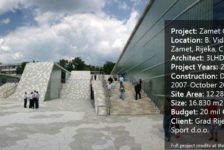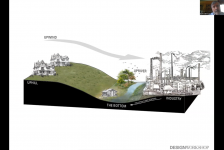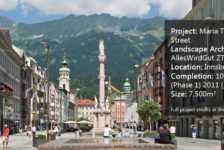Key elements to consider when planning urban trees. We all know the importance of trees on the urban landscape. More than just decorative elements, they contribute to the city’s improvement in the social, cultural, economical, and of course, environmental levels. Due to the complexity of the city interaction, trees cannot simply be planted without any criteria – the relationship between the natural and the built environment can be tricky and some risks must be identified to be avoided. Here you have a guide to help you out. For a strategic planning of the urban forest, follow these 5 essential steps:
Choosing Urban Trees
1. Evaluate The City’s Needs A direct way of evaluating the city’s needs is to measure environmental conditions and variables as they will be of great importance to assist decision makers. However, cities belong to people and therefore they must also be involved in the decision making process. It is of great importance to allow the community to take part in the urban planning as residents know the local needs better than anyone else. WATCH: Urban Forestry 24: From Street Trees to Sustainability–Science, Practice, Tools 2. Get Informed on The Benefits As said before, urban trees improve the urban environment in many levels. To name just a few, beneficial social aspects include sense of belonging and opportunity for human interaction; cultural include collective identity, economical include property value uplift, energy saving and attractive high street retail. The environmental aspects list is a bit longer, worth going into more detail:
- Shading: this is a passive cooling strategy of major importance, especially in tropical countries, as it blocks direct solar radiation so it won’t reach people, buildings and surfaces.
- Reduced air temperature: trees reduce the air temperature through a process called ‘evapotranspiration’, as they take the heat from the air to transform water from liquid to gas form.
- Higher air humidity: another benefit of evapotranspiration is the increase in air humidity, as the process results in loss of water (vapour) by the plant.
- Induced wind flow: lined trees can induce the wind flow by either blocking it, slowing it down or speeding it up, depending on the local needs.
- Pollution filter: tree leaves can filter toxins in the air, improving its quality. Also, trees help reduce noise which is another sort of pollution.
WATCH: Why Trees? 3. Choose The Species Correctly We cannot provide a list of the most suitable trees for the urban environment as it varies from country to country. But here are some aspects you must pay attention to:
- Climate: Choose trees that are appropriate for the local climate, even better, choose native species.
- Soil: it is important to analyze the soil condition before planting, correcting it if necessary for healthy plants for a long time.
- Water: Respect the tree’s needs, if you cannot provide plenty of water choose species which tolerate drought.
- Toxicity: Make sure the trees you choose are safe for people, especially children.
- Fruits: An urban orchard is great but avoid trees with large fruits as they can cause accidents.
4. Respect The Existing Infrastructure Take a holistic approach when designing the urban forest. Respect the existing urban elements so both natural and built environment can safely co-exist:
- Take in consideration the tree’s typology; the canopy must not obstruct vehicle traffic and pedestrian walk ability; make sure the tree size matches the sidewalk and street width.
- Shallow roots may conflict with pavements or underground infrastructure, which may cause disruptions in service.
- Although there is a favorable presumption towards large canopy trees, they should not damage powerlines or buildings,
- And don’t forget to provide adequate distance between trees.
Related Articles:
- 8 Amazing Facts About Trees That You Didn’t Know
- Street Tree Survival Guide
- 8 Awesome Reasons to Use Trees in The Landscape That You Didn’t Know!
WATCH: Benefits of Urban Forests 5. The Importance of Maintenance If all the procedures of choosing and planting was done properly, the urban trees will demand little maintenance: about five visits in the first year and just two or three visits in the following ones. The maintenance program should include weeding, pest control, watering (if necessary) and pruning, as well as soil renewal and grid replacement (or any other sort of protection element). WATCH: Residential Street Tree Maintenance — In a financial cost-benefit analysis, the implementation of trees and green areas in the townscape is one of the best strategies to improve the quality of life of city dwellers. They are relatively low-cost and have a great positive effect on the urban environment – if done properly – hence, it should be widely encouraged by local organizations. For more specific information on urban forestry, please refer to your local guide (generally provided by your municipality or city council). Recommended Reading:
- Urban Trees: A Practical Management Guide by Steve Cox
- The Urban Tree Book: An Uncommon Field Guide for City and Town by Arthur Plotnik
Article written by Julia Lucchese Return to Homepage
Published in Blog











Pingback: Selecting the Right Trees for Urban Landscaping